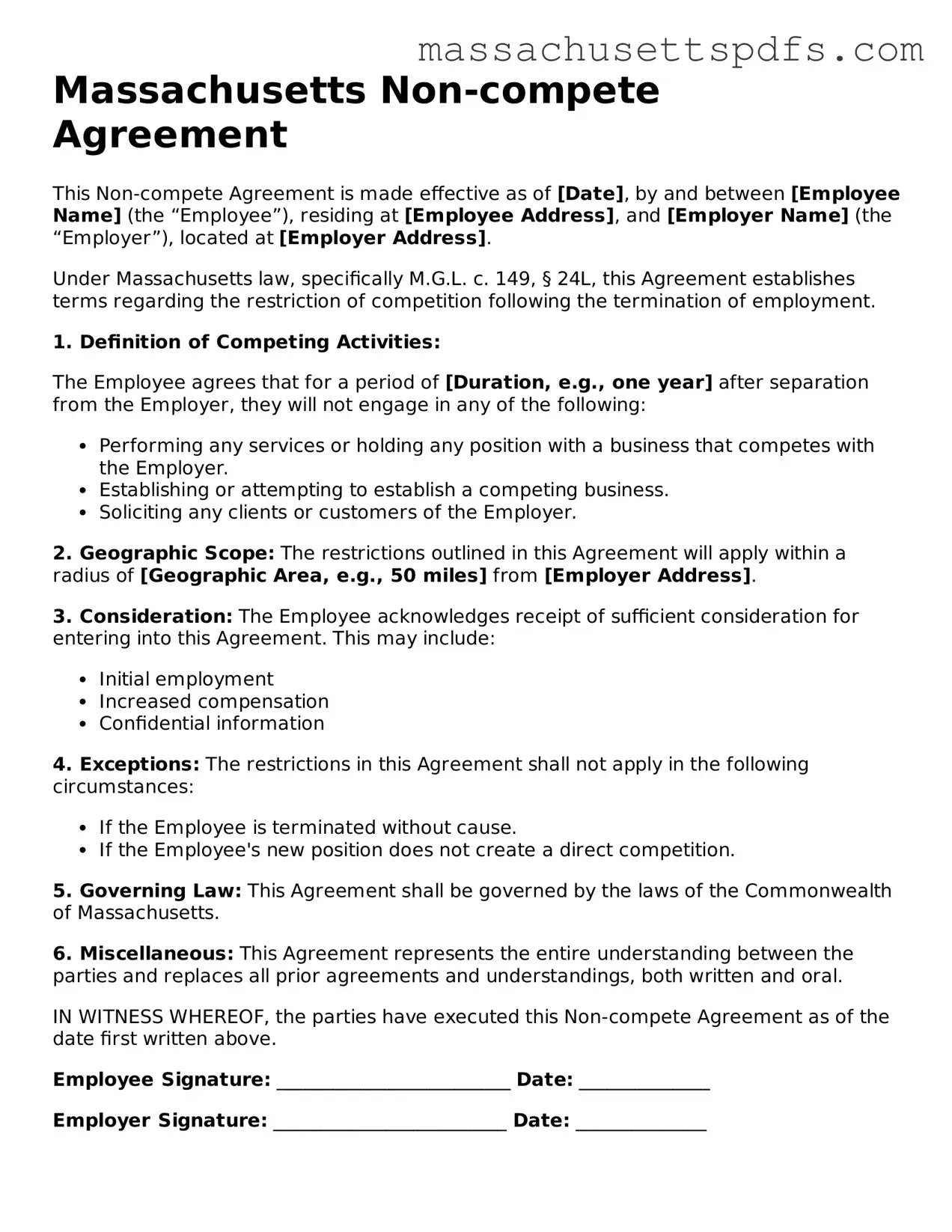Attorney-Approved Massachusetts Non-compete Agreement Document
A Massachusetts Non-compete Agreement is a legal document that restricts an employee from working for a competitor or starting a competing business for a specified period after leaving their job. This agreement aims to protect a company's trade secrets and competitive edge. Understanding this form is essential for both employers and employees to navigate their rights and obligations effectively.
Ready to create your Non-compete Agreement? Fill out the form by clicking the button below.
Launch Editor Here
